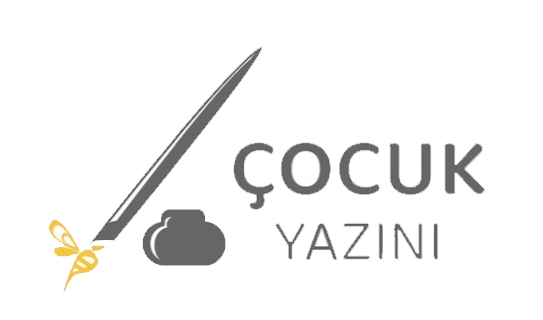When we currently refer to history or history teaching, the first thing that comes to mind is some studies on archive work and attempts to make historical publications.
When we currently refer to history or history teaching, the first thing that comes to mind is some studies on archive work and attempts to make historical publications. The most neglected subject in our historiography, which is challenged when it is necessary to think in another form and look from another angle is the teaching history to young people and children. In this article, what kind of innovations have been developed in the methods in teaching history for today's children, who are also called as the Z-generation. I will also deal with what can be done more in developing new methods.
In today's world as generations are raised in certain forms through television series and cultural and artworks, the number of individuals who are afraid to discover, and are addicted to prepared and practical knowledge. The only value created by the children growing with the warning "Do not make invention!" continues to be the expressions, thoughts, criticisms, and artifacts similar to each other. This is a situation that is extremely unstable in terms of history, and academically unethical. While historians eager to make new inventions are using the facilities provided by today's technology at the highest level, it is obvious that these technological opportunities do not improve the methods of history teaching that much. On the other hand, the narrative structure of the history texts belonging to any historical period is inextricably linked to the literature, and despite all of this fiction, the relationship it has tried to establish with reality requires another form of expression. So, can we differentiate these forms of expression for both children and the digitizing world today?
With regard to different forms of expression, it can be a feasible method to take advantage of the innovative opportunities offered by technology to deliver more realistic and accentuated reality in teaching methods. Today's big companies are expecting a high level "learning effort" from their employees, and good educational institutions from their students, researchers, and teachers. Innovative solutions have already been produced to realize maximum learning with minimum effort in this "learning effort curve" based on self-improvement and continuous learning of new knowledge. Providing immediate access to every source of information and entertainment, classical information transfer method -including making stories and storytelling with magazines and books in traditional ways- is considered to be a very effective method for children who are accustomed to learning quickly and practically in a short period of time. For a child whose visual memory is extremely evolved and who lives his life in the digital world, the photos on the corner of a page would not be sufficient. While visuality is an effective way of communication that can not be denied by the whole world, the dominance of it in public, marketing, and education is not only the result of technology but also the demands of younger generations. It is necessary to take inspiration from the companies providing the virtual reality experience to the employees with Gear-glasses and turn it into an education model, to explore children with innovative solutions, to offer more effective and lasting learning opportunities. One area where this can be effectively accomplished is children's literature.
The transfer of history and historical consciousness to children through children's literature, which is one of the most important tools in shaping the world in terms of children's intellectual and aesthetic sense, is an extremely sensitive and troublesome activity. The works that are considered worthy of praise and rewards are usually works that follow the traditional publishing method, that refer to the Anatolian lands and are thought to open an alternative road to the Western Orientalist point of view and that try to convince children's mind worlds. It is unfortunately unexpected from the works that are imposing only national values in the fictional sense without any universal message to create an enlightenment in the minds of children. Authors who try to tell children about history need to be creative, use the digital platform effectively, and address children through different communication channels. The channel to which this message can be transmitted is as universal and creative as the message to be given to children who have access to almost every imaginable world, imaginary worlds, and facts at very wide angles.
One of the most important tools that can be used for children in telling history is a 3D virtual reality. Children who are able to touch reality in a way with this method, which is both an engaging and versatile communication tool, can actually arrive at the narrative frame of history from a different perspective. When considered in this respect, it can be said that the application of communication as a method of expression is not only a form of expression and narrative but also an effective way of narration. It is not enough for children only to read and listen; they also want to see, touch, hear, communicate from time to time. For children, it is necessary to move the past to many places today. Transferring stories, tales, and magazines created within a historical pattern to the digital, a method applied in the marketplace. If a little research is done about this, dozens of things can be found. Apart from the fact that the cost is much lower than printed books and materials; its practical use, accessibility, transport, and recycling are extremely easy. Moreover, the convergence of sound and visuals in these transpositions will also support the formation of reality and accurate knowledge in children's imagination. Let's imagine that centuries ago, the social and cultural life of Istanbul was formulated in the correct form, that children were shown that region, that they witnessed people's lives, and that communication with them, though occasionally, was made. Having a historical trip through virtual reality, instant access to historical places anywhere in the world, It will be both interactive and enjoyable and productive learning method for children.
I now think that stories can not be told in traditional ways for children who access almost everything digitally and who constantly demand it. Children who "learn by living" a truly historical experience through 3D virtual reality can also be protected from the current ideological and historical transmissions that are attempted to be given through the TV series. Expressing the narrative in an interactive manner on the digital platform -as the history tries to establish by touching reality that the literary works have already done- can alleviate the burdens of both literature and the history.

